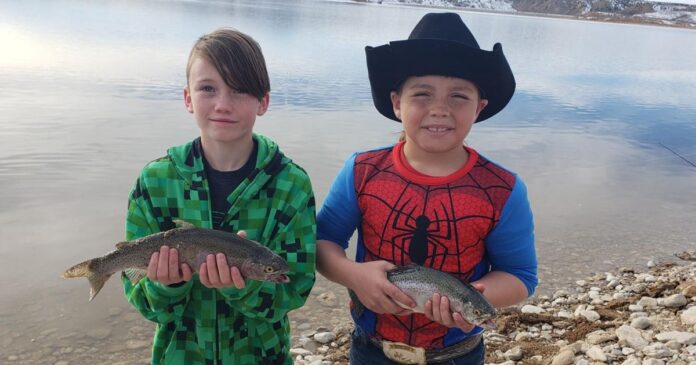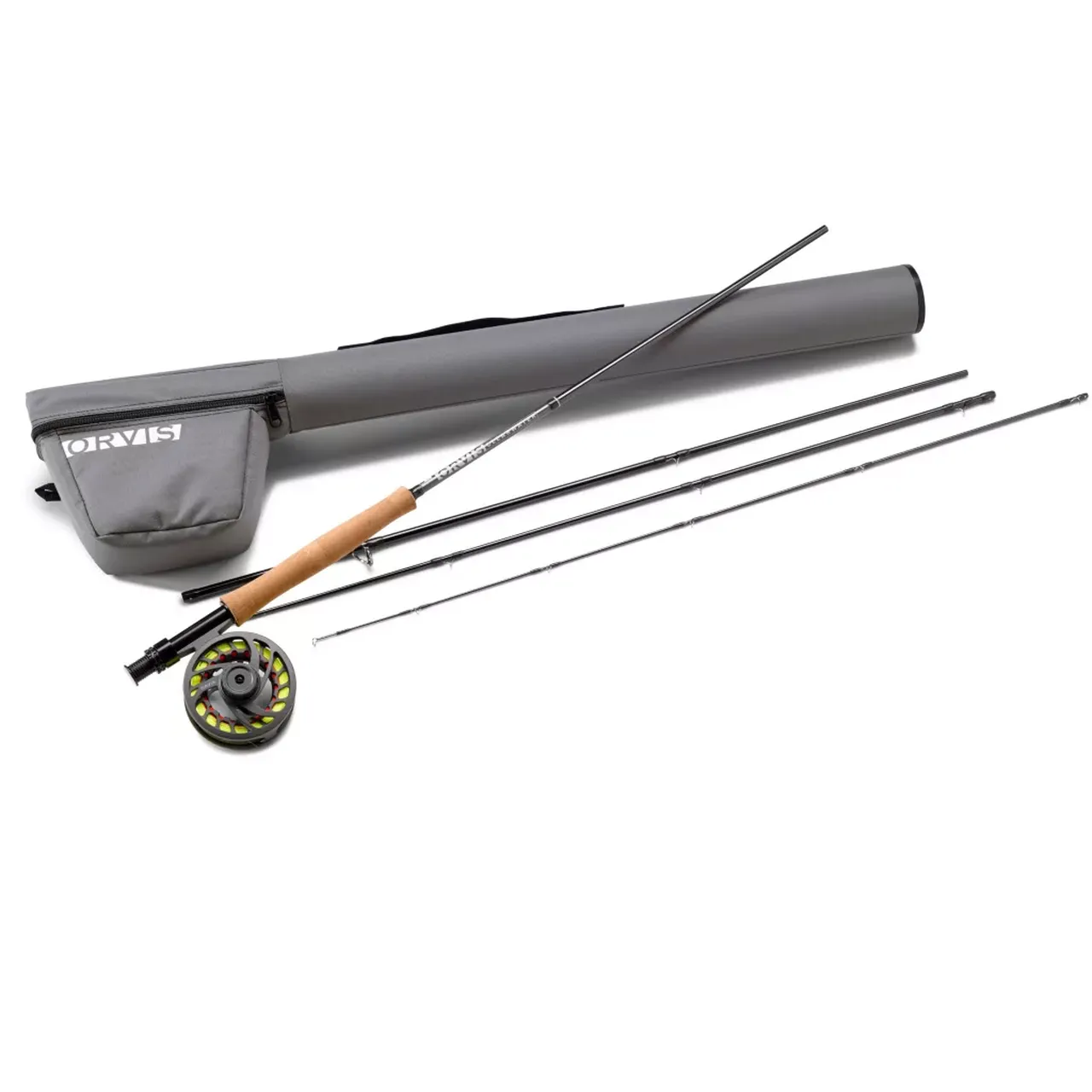Last week we discussed ice safety and I stated that early and late season ice is the most dangerous as it can change quickly. This is due to a number of factors including: larger swings in temperature early and late in the winter, wind, water movement in the lake, springs, snow cover and the thermal load in the water left over from the summer.
Last week was an example of how quickly early ice cover and thickness can change. South Fork was 90-95% ice covered on Wednesday, Nov. 23, the day before Thanksgiving. The open water was along the eastern shore near the main boat ramp. Just two days later, the day after Thanksgiving, the lake was between 85-90% ice covered and by Wednesday, Nov. 30, it was closer to 80-85% ice cover and the ice that was on the lake was mostly the gray porous ice that is so dangerous.
Why did this happen? First and foremost, the daytime highs went from freezing or below to above freezing, even approaching 40 degrees. It was also very sunny and the eastern shoreline gets the most direct afternoon sunlight when the day is warmest. The steep shoreline above the water reflects the heat from the sun into the water helping to raise the temperature. Finally, Thursday found winds pushing 40 mph which helped to break up some of the thinner and rotten ice
People are also reading…
Wildhorse is approximately 1,000 feet higher in elevation and has more of an eastern exposure, and as a general rule, the air temperatures are five to 10 degrees cooler. The eastern exposure means less direct sunlight during the warmest part of the day so it ices up earlier and will have thicker ice than South Fork.
One factor that anglers fail to realize is that once there is ice on the lake, it insulates the water below from the colder air temperatures above and the ice slows down its growth. If snow cover is added to the mix like the snow we received this past Thursday night, it adds more insulation and grows even more slowly.
Early in the season the ice thickness will also be more variable with four or five inches of safe ice in one spot and just a few yards away may be an unsafe two inches in thickness. While the ice at Wildhorse is right about four inches right now, there are spots where it may be thinner. Ice anglers are anxious to get on the ice once it appears to be safe enough, but let’s give it another week or so at Wildhorse just to err on the safe side.
Last weekend the ice thickness was around four inches, but there were spots that were thinner. Give it at least another week, and two weeks would be better, before heading onto the lake depending upon the weather. With the colder temperatures forecast for the upcoming week, it may be safe for ice fishing the weekend of Dec. 10. As a general rule, this lake doesn’t have safe ice until around Christmas, but the below average air temperatures in November gave the lake an early start in forming ice. CJ Ellingwood, NDOW Biologist responsible for Wildhorse, expects trout fishing through the ice for 18” and larger fish to be good this winter. However, he says that fishing for yellow perch through the ice will be slow due to the fishery recovering from the spring 2022 die-off.
The dock is out of the water and the main boat ramp is closed for the season. As of Thursday, December 1, the lake was 80-85% ice covered with very unsafe ice. The open water was along the northeastern shoreline from the main boat ramp cove up to the dam. This weekend has daytime highs above freezing in the area and Saturday’s weather may be conducive to fishing the open water though snow and wind is forecast for Sunday. Anglers took advantage of the nice weather Thanksgiving weekend and fishing was good just south of the boat ramp cove for shore anglers using pink PowerBait and a variety of small spinners, Panther Martins and flies.
No recent reports, but with the recent snows, expect 4WD conditions to get here. Water conditions here are generally similar to South Fork so there may be some open water for fishing. However, that may not be the case and even if it is, it won’t be long before it does freeze over. At last report, early November, fishing was good here but the lake level was still low. Use the same techniques as at South Fork Reservoir. Shore anglers were having success fishing rooster tails, spoons, Rapalas, or bait fishing a worm under a bobber. Fly fishermen were having the best luck using leeches, wooly buggers and chironomids. Bass fishing was poor and with the formation of ice is done for the year.
Harrison Pass is not passable due to recent snowfall this week, so access to the Refuge is through Secret Pass. The south marsh and dike units are frozen with unsafe ice. The collection ditch has a fair amount of ice at the north end starting at Bressman cabin. The south end of the ditch also has some ice. There is still open water at various spots along the ditch for fishing and anglers can expect fair to good fishing for 15 to 20-inch trout with an occasional fish over 20 inches. NDOW has stocked the collection ditch with trout. Chironomid patterns such as zebra midges, red butt buzzers, chironocones and ice cream cones should catch fish. Other flies such as leech patterns, balanced leeches, crystal buggers, #14-16 hare’s ears, #16-18 PT nymphs and scuds fished under an indicator are recommended. Expect fair to good fishing for Spin anglers should be using small spinners in black or olive with contrasting yellow or red colors as well as small minnow imitations. The collection ditch is artificial lures only, no bait. Wading is not allowed in the ditch.
JAKES CREEK/BOIES RESERVOIR
Jakes Creek is ice covered with two to four inches of ice depending upon where on the reservoir you are. Give this lake another week or two before venturing on the ice. Once the ice is safe, expect good fishing for 10 to 14 inch trout this winter.
No recent report but expect unsafe ice here with maybe a bit of open water where the creek empties into the reservoir.
Cave Lake is lowered to minimum and unfishable. Fish stocking will resume once the dam repairs are completed. Cave Lake is closed to fishing due to shorelines that are very soft and dangerous due to the complete saturation of the soil. For more information on Cave Lake, please contact the NDOW Ely Field Office.
This lake is mostly ice covered with unsafe ice though there may be some open water at the north end of the lake. With daytime highs above freezing this weekend, ice growth will be very slow until next week when temperatures drop. This lake will need two to three more weeks before it is safe. Once there is safe ice anglers can expect good fishing for 14 to 18 inch rainbow trout through the ice with an occasional brown or tiger trout. Pike through the ice should be fair. Anglers, please note that NDOW has placed radio tags in several Northern Pike. These pike will have an orange Floy tag near their dorsal fin and a small antenna (~ 7 inches long) coming from their stomach. Please return these fish to the water for research purposes. All other pike should be humanely dispatched. There is no limit on the pike.
This lake is mostly covered in unsafe ice. At last report there was some open water along the north side of the old dam and along the northwestern shoreline that may be productive for anglers if it is still open. Expect 4WD to get into the lake with recent snows. With the warmer weather predicted for the weekend, there may be some open water for fishing. It will be another few weeks before there is safe ice here. Once there is safe ice expect fair to good fishing for 10 to 14-inch trout.
The road is closed for the winter and the lake is ice covered. There will be no reports until late spring or early summer depending upon weather and snow conditions.
Those wanting to hike into the Rubies will find deep snow conditions and only experienced back country trekkers should attempt to get away from the roads. The lakes are ice covered and there will be no more fishing reports until late next spring or early in the summer depending upon snow conditions this year.
Access to the fishable parts of streams is difficult due to recent snows. If anglers get to the streams expect ice and snow making fishing difficult. Lamoille Canyon access is by snowshoe, skis or snow mobile due to snow which is currently about three feet deep at the Snotel site in the canyon. Access to both the Bruneau and Jarbidge Rivers is now through Idaho due to snow conditions. Access the Jarbidge through Rogerson, Idaho north of Jackpot and access the Bruneau through Grasmere, Idaho north of Owyhee. As of December 2, the East Fork of the Owyhee was flowing at 7.57 below Wildhorse dam, while the station near Mountain City is showing ice. The Bruneau River also showing ice, the Jarbidge flowing at 6.37 cfs, Salmon Falls Creek at 40.1 cfs, Lamoille Creek station was showing ice, the South Fork of the Humboldt at 5.24 to 8.1 cfs, Cleve Creek at 4.46 cfs, Steptoe Creek at 1.58 cfs and Kingston Creek at 1.86 cfs.
Credit: Source link






























